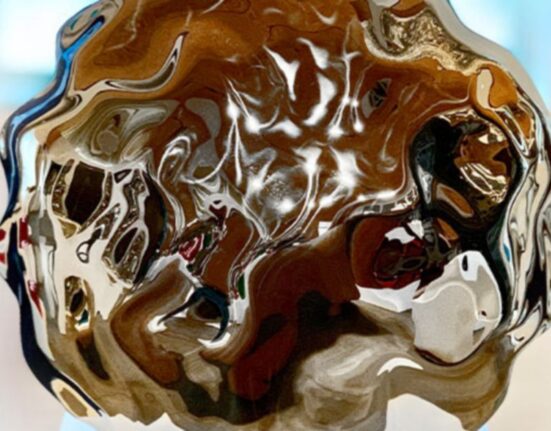Despite the long-lasting downturn and the negative backdrop, such as OpenSea slashing half of its personnel just last week, the market is projected to almost double from $1.6B in 2023 to $3.2B by 2027. NFT volume in October was at its highest since the end of August and 38% higher than the lowest week in September, based on Nansen’s data.
The primary allure lies in the inherent properties of the tokens — providing a proof of ownership and ensuring provenance, which are pivotal in sectors like art, gaming, and customer engagement. NFTs are still seen as a gateway to fostering a more transparent and accountable digital ecosystem.
Speaking about the obstacles for the market growth in 2024, Matt Medved, the co-founder and CEO of the media company nft now, told me in an interview: “Many of those outside of this niche community associate NFTs with cookie cutter PFP projects and nonsensical price points. Similar to crypto’s early days, some even write off the entire sector as a “scam.” Education is critical to helping the mainstream market understand the power and potential of digital ownership, emerging use cases and the paradigm shift that we are seeing with web3.”
John Wu, President of the development firm AVA Labs, highlighted the transformative potential of NFTs in an interview with me: “NFTs provide a way for artists to establish ownership of their digital creations, create new revenue streams, and engage communities around artists’ work”.
Here are five other trends experts are foreseeing for the NFT trajectory in 2024.
Integration With Real-World Assets (RWAs)
The integration of NFTs with RWAs unveils possibilities in transforming physical (illiquid) assets into highly liquid on-chain tokens and facilitate instant cross-border investments. The transition from purely digital assets to a blend of digital and real-world assets could broaden the scope and appeal of NFTs, bridging the gap between the traditional financial realm and the burgeoning blockchain space.
“RWAs make for an amazing NFT use case turning illiquid RWAs into highly liquid on-chain tokens, enabling instant cross-border investment in all sorts of infrastructure and other projects,” Max Thake from the blockchain platform peaq, told me in an interview.
In real estate, the tokenization process aligns with millennials’ preference for more flexible investment and ownership models, transforming the market dynamics. Meanwhile, in the domain of art and collectibles, tokenization provides a mechanism for fractional ownership, allowing a broader spectrum of investors to partake in the ownership of high-value art pieces. This not only boosts market liquidity but also ensures price transparency.
Need For Regulatory Clarity
Experts are calling for a more user-friendly infrastructure and regulatory clarity for NFTs. A clear regulatory framework is considered crucial for protecting consumers and investors, ensuring a level of stability required for the NFT space to mature and grow.
This sentiment underscores the integral role of a clear regulatory framework in cultivating a stable and reliable NFT ecosystem, which in turn could propel the industry towards a more sustainable growth trajectory.
Although it is unlikely we will see any regulatory moves regarding NFTs in 2024. “To prompt a fairer regulatory approach to NFTs, the industry must first focus efforts on educating policymakers about the value and nuances of NFTs, separate from those of cryptocurrencies. While compliance and regulations are warranted, creating an even playing field accounting for the individuality of different Web3 technologies is a complex task — and one that should not be rushed,” Rusty Matveev from the blockchain app Calaxy told me in an interview.
Market Growth Leading To Value-Based NFTs
The initial cosmic growth of NFTs, often driven by speculation, is maturing into a more value-driven market. In 2024, projects should introspect on the real value and utility they bring to the table. This shift leads to more sustainable and valuable NFT projects that withstand market fluctuations.
“NFTs have one use case that touches fashion, rare gemstones, and pharmaceuticals: preventing counterfeiting. Whether we’re talking about high value clothing and handbags or malaria medication in Africa, counterfeiting is a major problem. In the rare gemstones market, NFTs could be used to authenticate whether a stone was ethically sourced from a mine which did not rely on child labor,” Richard Gardner, CEO of Modulus, told me in an interview.
In another example, authors and educators transitioned their works into NFT formats and gave rise to NFT Publishing Marketplaces such as Bookwire, which provided a platform for such digital formats.
This thought process is instrumental in steering the NFT market towards a more value-oriented and sustainable direction, where projects thrive on the utility they provide rather than the speculative hype.
“What happens next is a calmer, more reasonable and sensible search for use cases where NFTs can add real value… we’ll see more and more NFTs that are valuable by virtue of their utility, not sheer speculation,” Thake added.
Environmental Concerns
The carbon footprint associated with the computations required to validate transactions and mint new tokens on the blockchain. It’s projected that an average NFT will emit 211 kg of carbon dioxide (CO2) over its lifetime due to the processes involved in its creation and acquisition.
Ilya Rybchin, a partner at business consulting firm Elixirr, highlights an ethical conundrum faced by environmentally conscious consumers. In our interview, he mentioned that “many of the same consumers who are interested in NFTs are also environmentally conscious. For them, investing in an asset that produces a tremendous environmental impact creates an ethical dilemma.” Thus, companies should take the environmental impact into consideration.
Brand And Artist Collaborations
Collaborations between well-established brands, artists, and the digital art communities are seen as a significant stride towards promoting NFT adoption and creative expression.
The recent launch of Web3 artist residency by Adidas spotlighted the convergence of art and fashion to a broader audience of creators and investors. Collaborations help foster a more inclusive NFT ecosystem, which leads to more mainstream acceptance of NFTs.
“Initiatives like the Adidas Digital Art Studio Residency have the potential to be a significant catalyst for the NFT market’s revival. Engaging artists and creators in such programs will help to promote NFT adoption and creative expression,” Rusty Matveev told me in an interview.
Matt Medved believes that innovation and culture are driving the market’s growth. As he noted in an email to me, “NFTs have helped bring blockchain technology mainstream by engaging the creative industries and ushering a new generation of creators and builders into web3. As we lead more of our daily lives digitally, the ownership layer will be important across every category. Fortune 500 brands like Starbucks and Lufthansa are launching loyalty programs left and right. Gaming, music and fashion are multi-billion-dollar industries currently embracing this technology”.
While experts agree that the future of NFTs won’t resemble the bull run of 2021, some speak about the potential revival of the market in 2024. This positive outlook stems from utility and value-driven projects, creative collaborations, and demand for real world applications.






